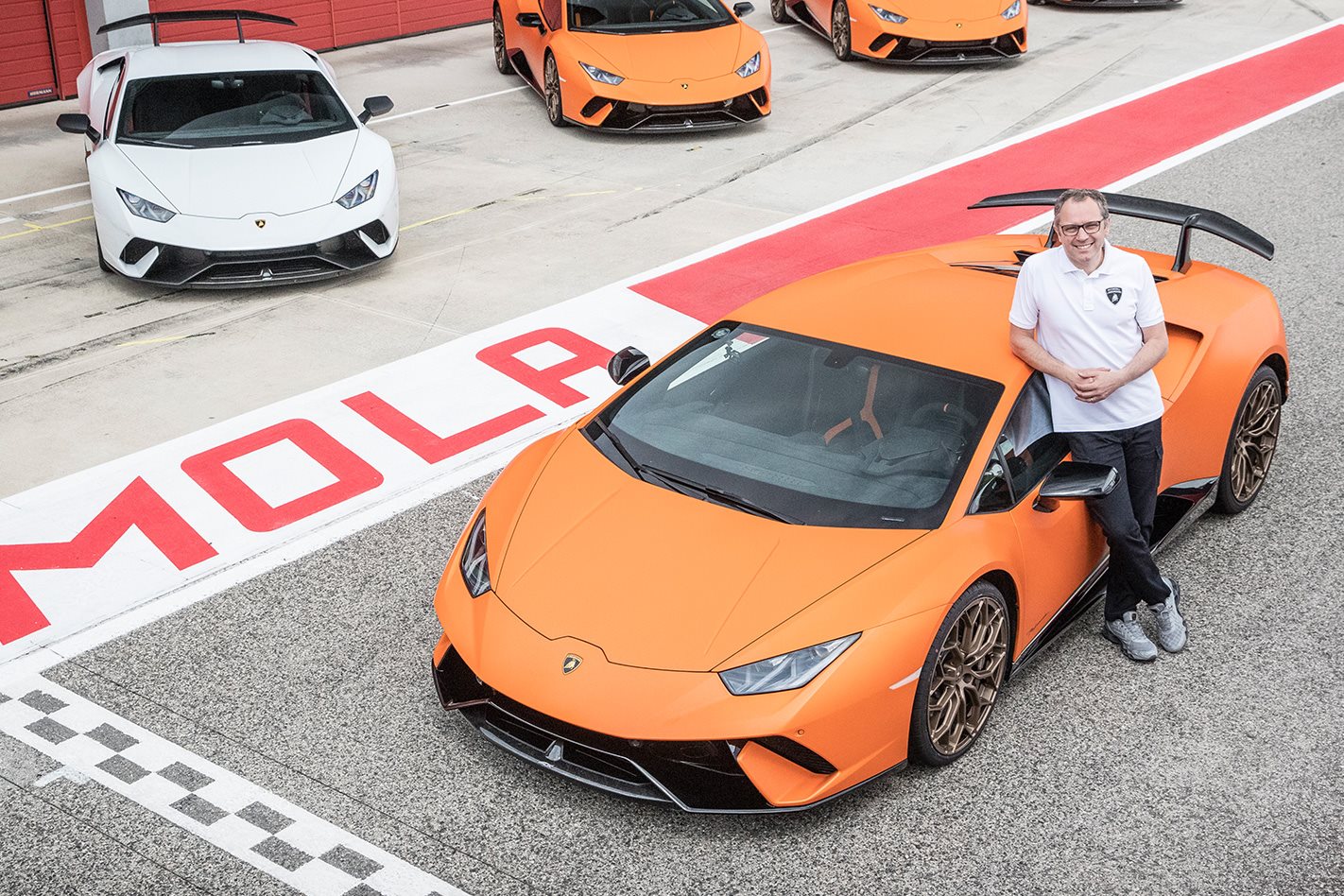For a moment I wonder if Stefano Domenicali is really the right guy to be leading Lamborghini, one of the world’s most extrovert carmakers.
If you have ever daydreamed of returning to your old school in triumph and finally exorcising the long-buried hurt of being passed over for sports teams, ignored by the opposite sex, and told you’ll never amount to much, with a display of your subsequent success (please say it’s not just me) – well, this arrival would do nicely.
Stefano arrives at his old school in Imola in a yellow Lamborghini Huracan Performante with a police escort. The school is having a road-safety day and Stefano is the guest of honour.

For seven years he led what is effectively the Italian national Formula 1 team and was a constant presence on their televisions, on the pit wall or in his typically humble, cooperative post-race interviews.
He leans towards me in the passenger seat, and touches my knee. “You know, I’m not comfortable with being the centre of attention. I don’t like it when the focus is so much on me. This is really their day. And I don’t want to run over a child’s foot. Especially today.”
He starts to relax once we park. And then, to mark his arrival, the town band strikes up. But once he’s out of the car, you see that he’s exactly the right person to be leading Lamborghini.

We do most of our talking back at the Imola circuit, where he is launching the Performante to the world’s motoring media, in a quiet room overlooking the pit lane.
“I was born here. I remember as a child coming to see races of bikes and cars here because the circuit is in the centre of town. I had the enthusiasm of all the kids that were born here. I didn’t miss a single race.
“In high school on race days I worked here. I was the guy who went between the organisers and the teams, and I was there in the middle of the trucks and I knew everyone. I lived a lot of moments here. I remember all the racing. I remember incredible times with the 200 mile-an-hour motorbikes with Kenny Roberts and Barry Sheene. And then I remember all the Formula 1 races. I remember seeing Villeneuve and Pironi, and unfortunately I was here when Ayrton Senna died. All the memories are here. But I would never expect to change side from the passionate guys that were cheering and asking for autographs, to be the guy leading the Ferrari team.”
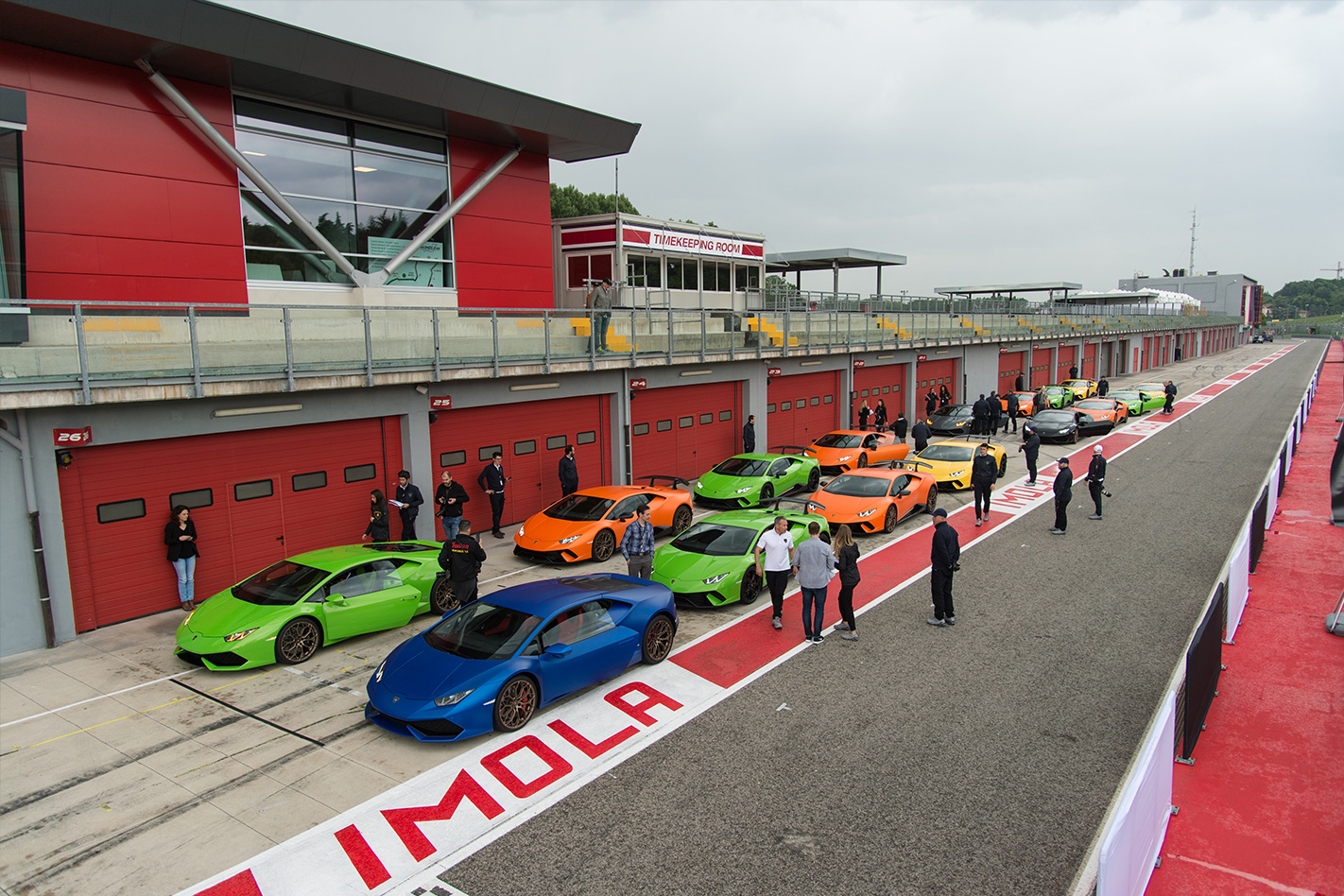
But those childhood memories don’t include the extraordinary road cars that have long come from his region, and which he now makes.
“Sometimes when you are inside the hurricane – and I don’t mean the Huracan, I mean a real tornado – you don’t think about it. I have to be honest: in that moment, I was not thinking about it. I thought it was normal. Then the more I was living around the world, the more I had this appreciation, but during my teenage period I was not really perceiving that as something incredible.”
His office might have been close to home but he certainly travelled, to every part of the world that F1 attempted to colonise in his 23 years with Ferrari.
The last seven were as Team Principal and were not Ferrari’s finest with only one championship win, but he was immensely popular and clearly able.
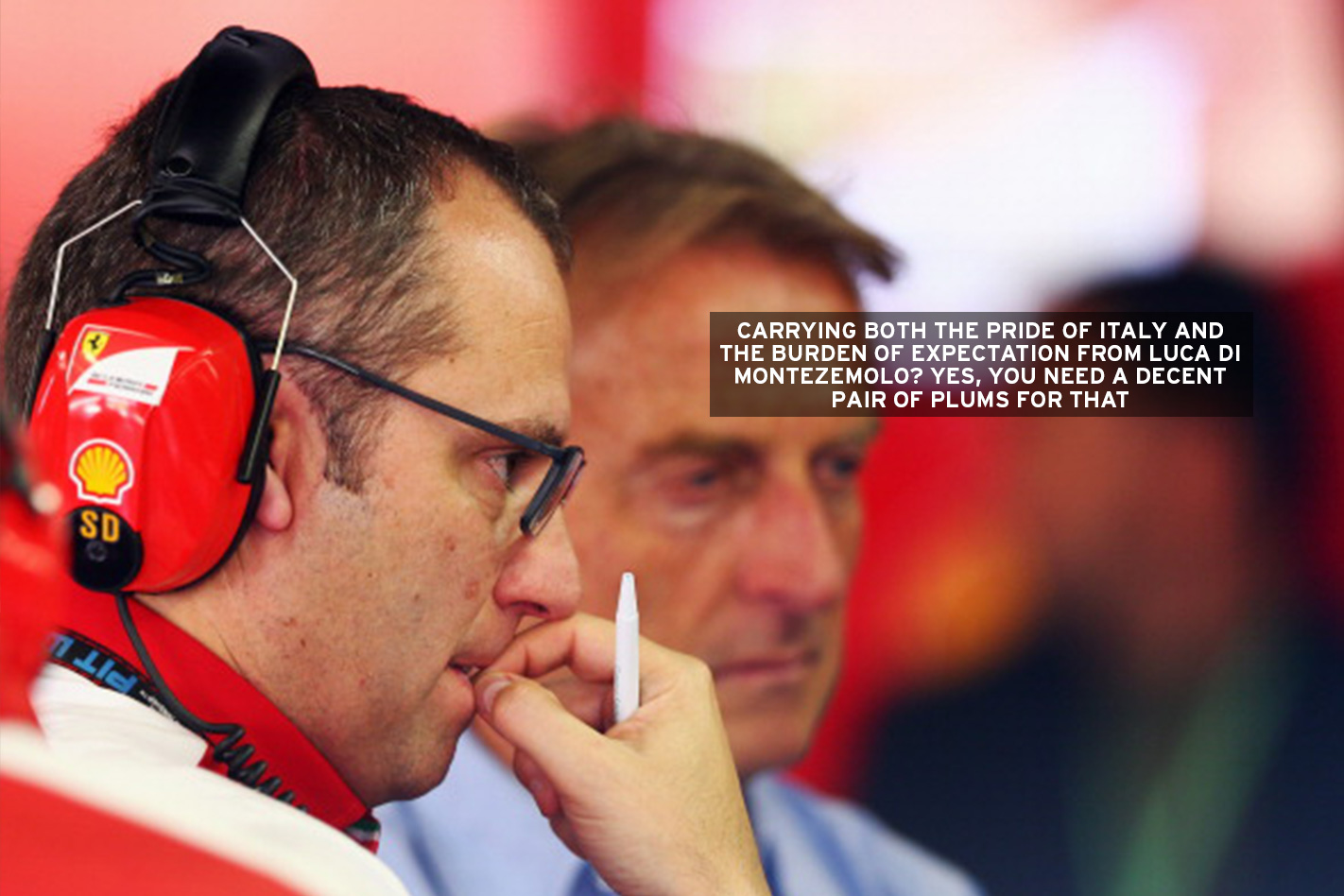
He throws up a similar smokescreen when asked about that time now, but of course he was examining an Audi F1 entry, with an engine supply deal for Red Bull as the first step. When it became clear that the cost of winning the championship would be too great and the emissions crisis hit, he was made CEO of Lamborghini.
He started in March last year. Italian Stefano replaced German Stephan, and the two couldn’t be more different. Stephan Winkelmann was one of those expatriate German car bosses who go native. He cultivated the look and manner of an Italian business prince like Agnelli or di Montezemolo. His trouser cuffs were always cut to brush the tops of his shoes, in the Italian fashion. He out-Italianed the Italians and was not universally popular, but he left Lamborghini in sensational shape, with record sales, profits and turnover.
I first saw Italian Stefano as I disgorged from a bus at the circuit that morning with a bunch of other hacks. A slight figure wearing the staff uniform of white polo shirt, black trousers, and Lamborghini trainers was darting between the Performantes lined up for the drive program, as if checking them.
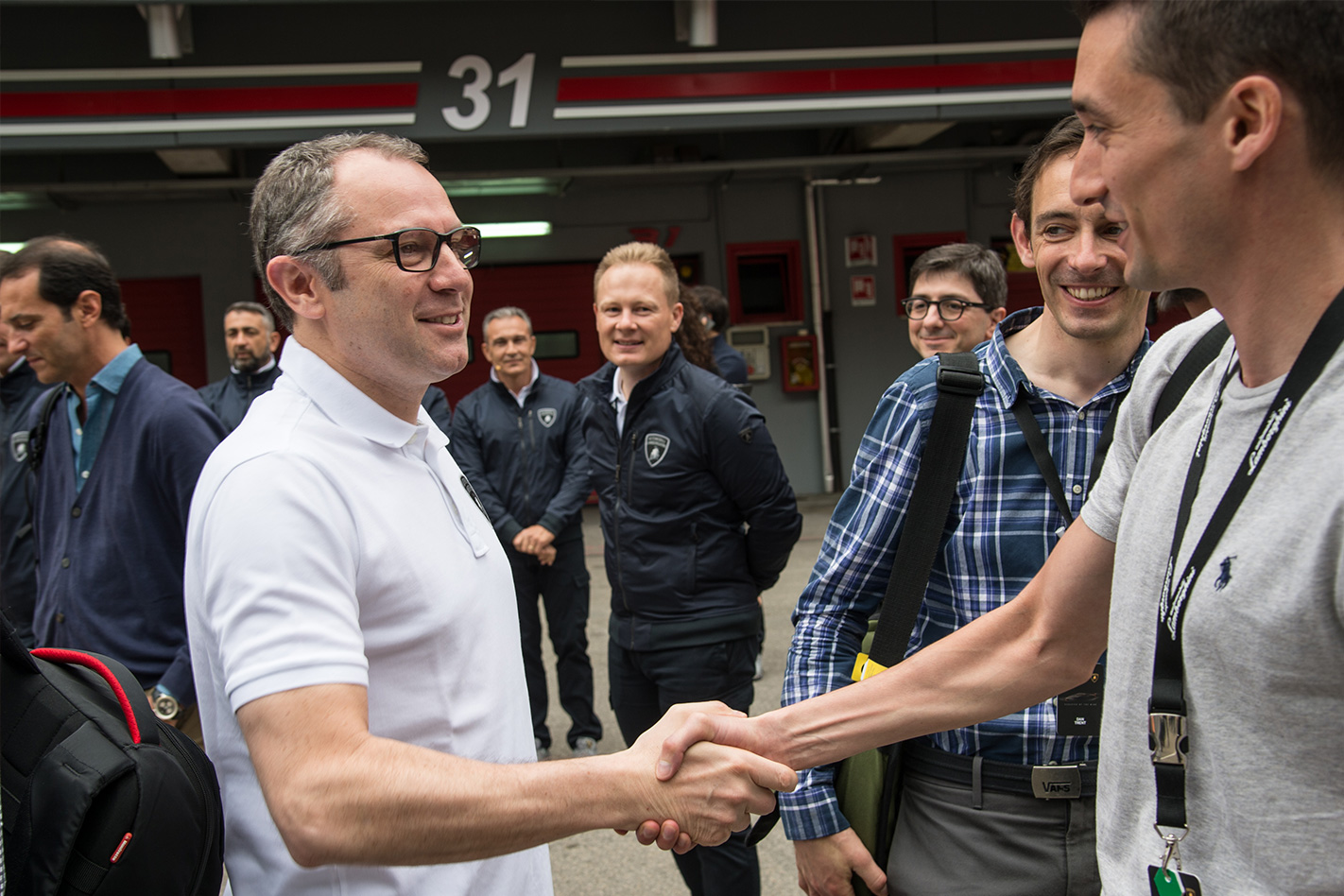
He skipped over, shook us all by the hand and led us up to a track briefing, which he delivered in English and without notes before clapping his hands and saying, “let’s go and have fun.”
His hair has been cut, not styled. He hasn’t been near a sunbed. Like Mark Zuckerberg with his permanent grey T-shirt, you sense that Domenicali’s attention is focused solely on his work and not his personal image.
He spent most of his working life in a uniform as part of a team and plainly doesn’t see the need to change that now he’s a CEO. But aren’t running an F1 team and a carmaker utterly different activities?
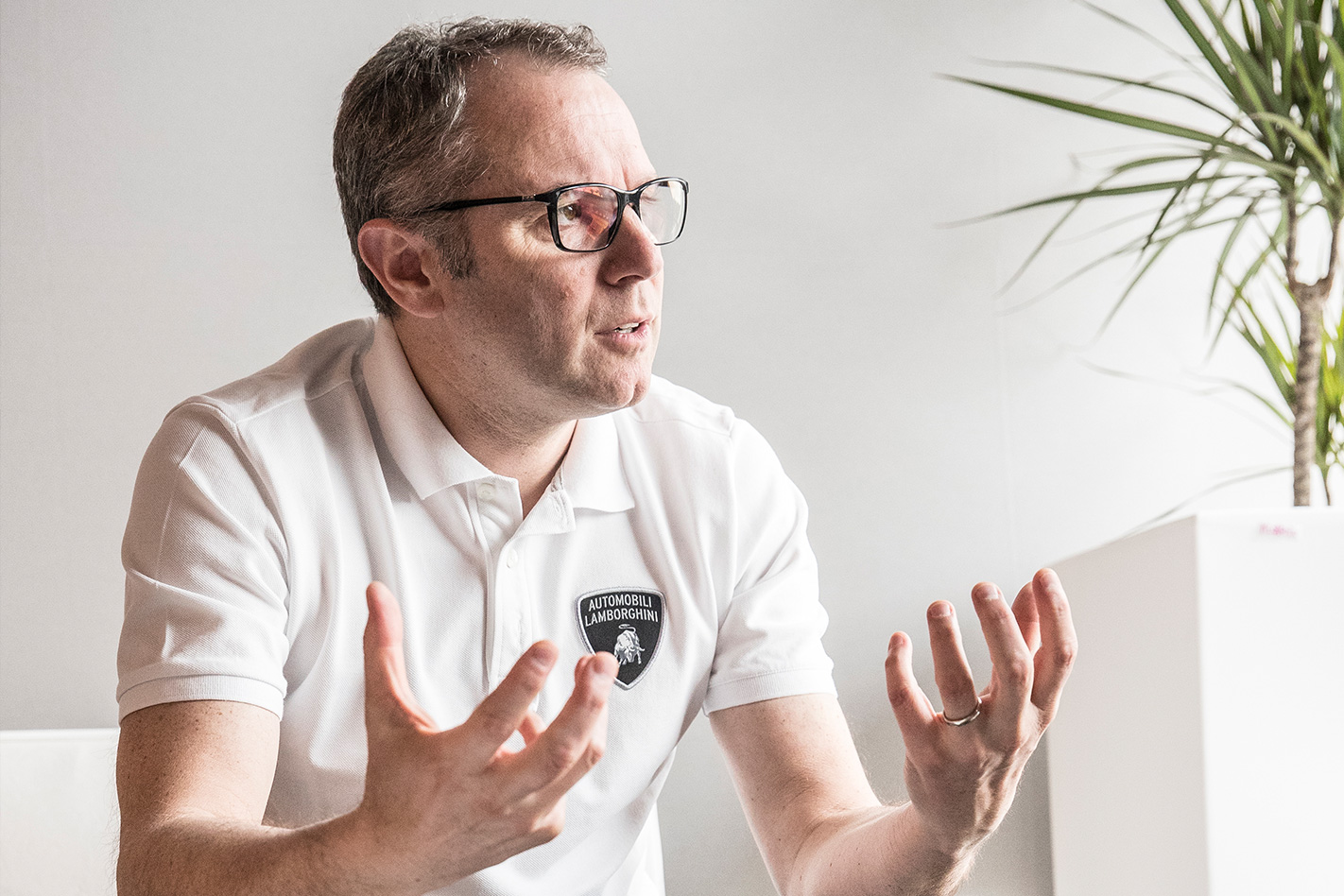
“From an F1 team to super-sports cars, for sure you have to know more elements that were natural in my previous experience. So I need to be humble. I always try to apply my maximum approach in the areas that are out of my comfort zone. To work on things that I already know would be much easier because I can do it with one eye closed and one eye open. That would be wrong. These things I try to delegate even more. I try to focus on the things that I need to learn. You have to remember you are not the king. You do not know everything. That would be the killer.”
Audi plainly has faith in his ability to learn on the job. Lamborghini’s turnover will soon exceed a billion euros. Its 3500-car output will double with the launch in December of the Lamborghini Urus SUV.
Eventually, Stefano thinks it will treble. He hasn’t been asked just to caretake a stable business. He has to guide Lamborghini through a period of steroidal expansion, with all the attendant risks to its image and the quality of its cars. His instinctive connection with his staff will help.
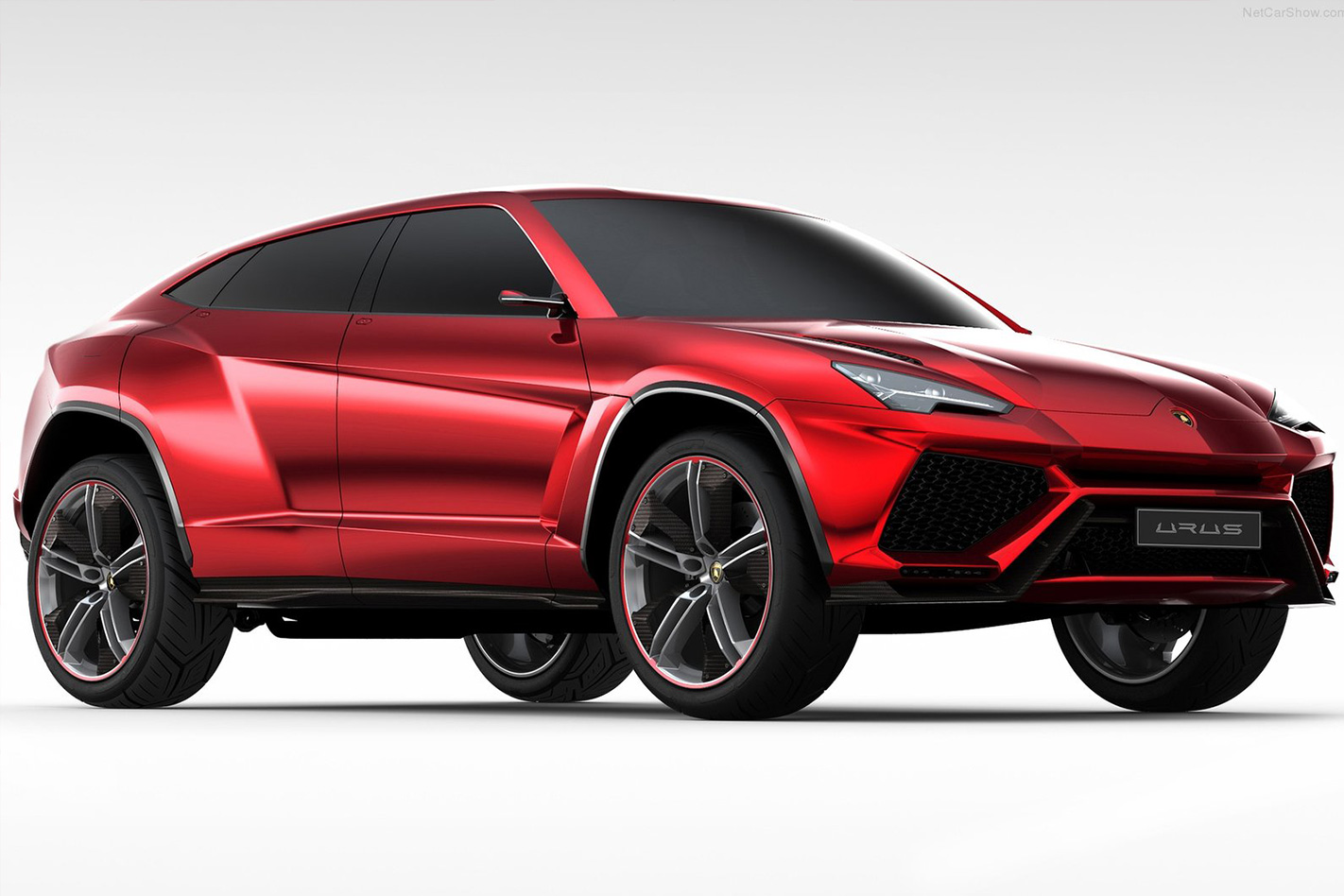
The first new Lamborghini he could still influence was the Performante we’re driving, and he tells me he did make some changes. But it’s a sideshow compared to the transformative Urus. The first pre-production cars are about to roll out of Sant’Agata.
“I wish I could show it to you now. It will be very sporty, very good sound, very great at driving, with a cool design. In a segment where everyone is present, we need to be different, so we have made something with all the values of our super-sports cars. This is fundamental. We are going to give a push to the extreme part of the segment. I’m expecting that our competitors will react to it, and look at how this market can grow. There is a lot of potential there.”
There won’t be a Performante version of the Urus: Domenicali says its performance will already be sufficiently extreme for an SUV. And while Urus will debut turbocharging for the Lamborghini brand, Domenicali remains attached to natural aspiration and the V12 engine in particular. There’s life in it yet, he believes, and it provides both a reference point for the brand and a key point of difference to its rivals.
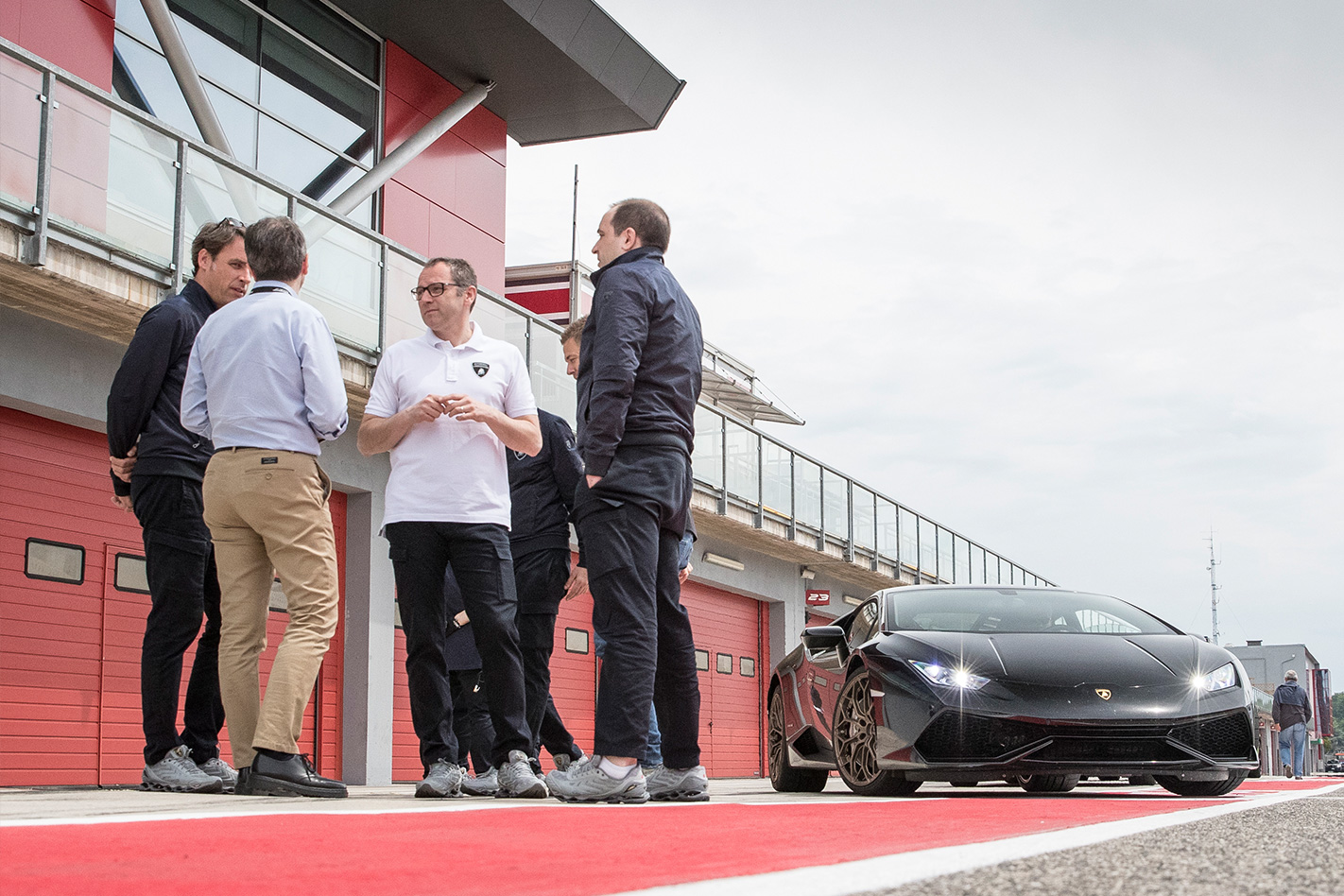
Later, Lamborghini will use one-off or limited-run models like the Veneno to introduce new propulsion technology and prepare us for its introduction on its standard cars.
By 2025 or 2030, Lamborghini could be making 10,000 cars a year, but growth will come from additional models: first the Urus, then maybe the 2+2 or crossover. Domenicali says the whole portfolio will only grow at the same rate as the segments it is present in, so Huracans and Aventadors (and their replacements) will not suddenly become commonplace.
“We need to be different. If we are different, we will be successful. The risk is to be diluted, and we are small. An ant who wants to fight against the elephant, either it’s quick, or it has a problem.”
Unprompted, he denies again that his move to Lamborghini indicates that VW still plans to enter F1. The costs just don’t stack up. But Domenicali remains the head of the FIA’s single-seater commission, and if he encourages changes to the formula to make it more affordable he might yet find himself competing with his old employer on road and track.
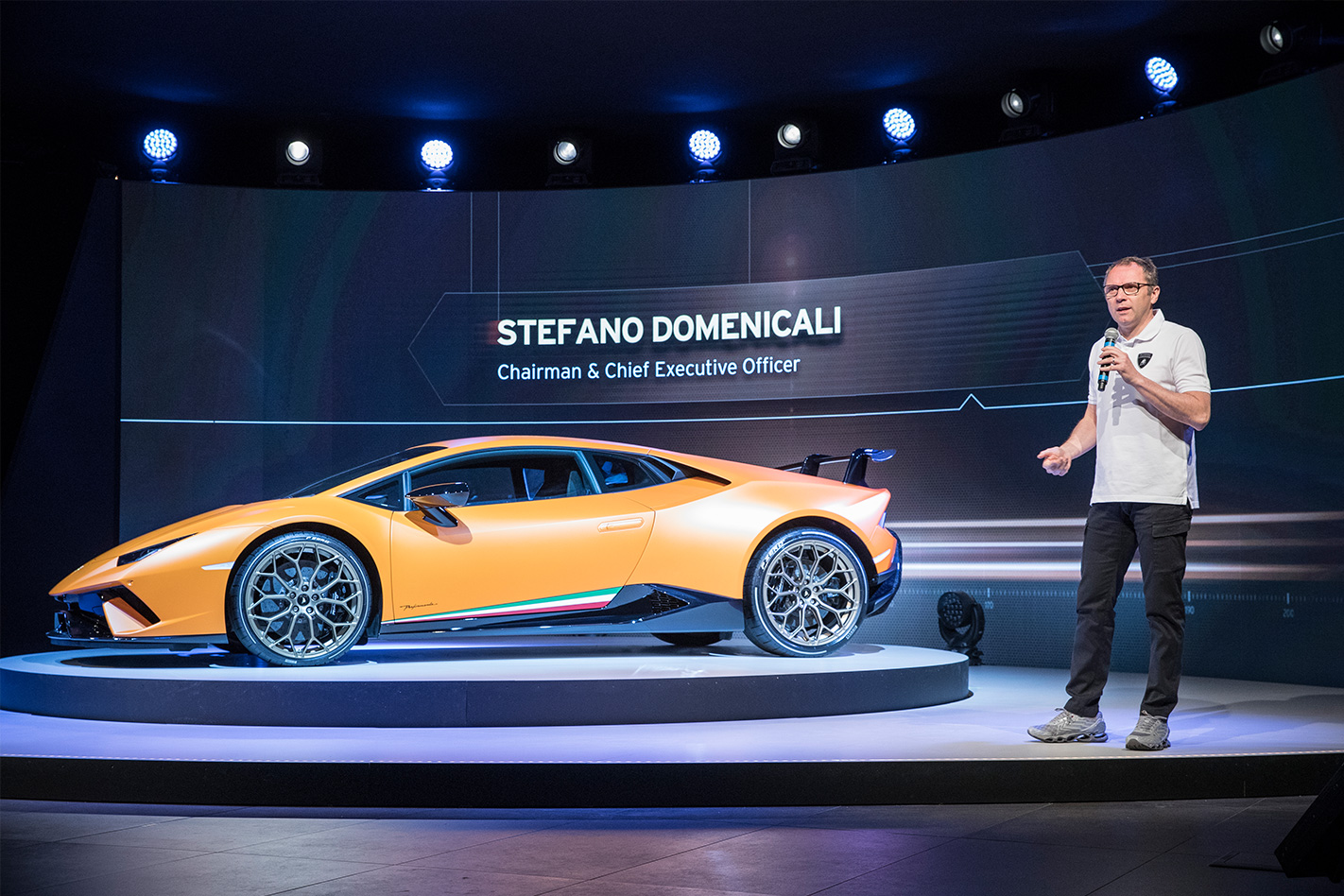
“I spent half of my life with Ferrari. I have been here just a year and a couple of months. It seems like yesterday, it seems like life, I don’t know. I am very proud of my time with Ferrari. I have a fantastic relationship with the people at Ferrari still, because it’s stupid not to do it like that. It’s not my character. We need to have the inspiration of them, but only to make sure we are different. The biggest mistake would be to copy.”
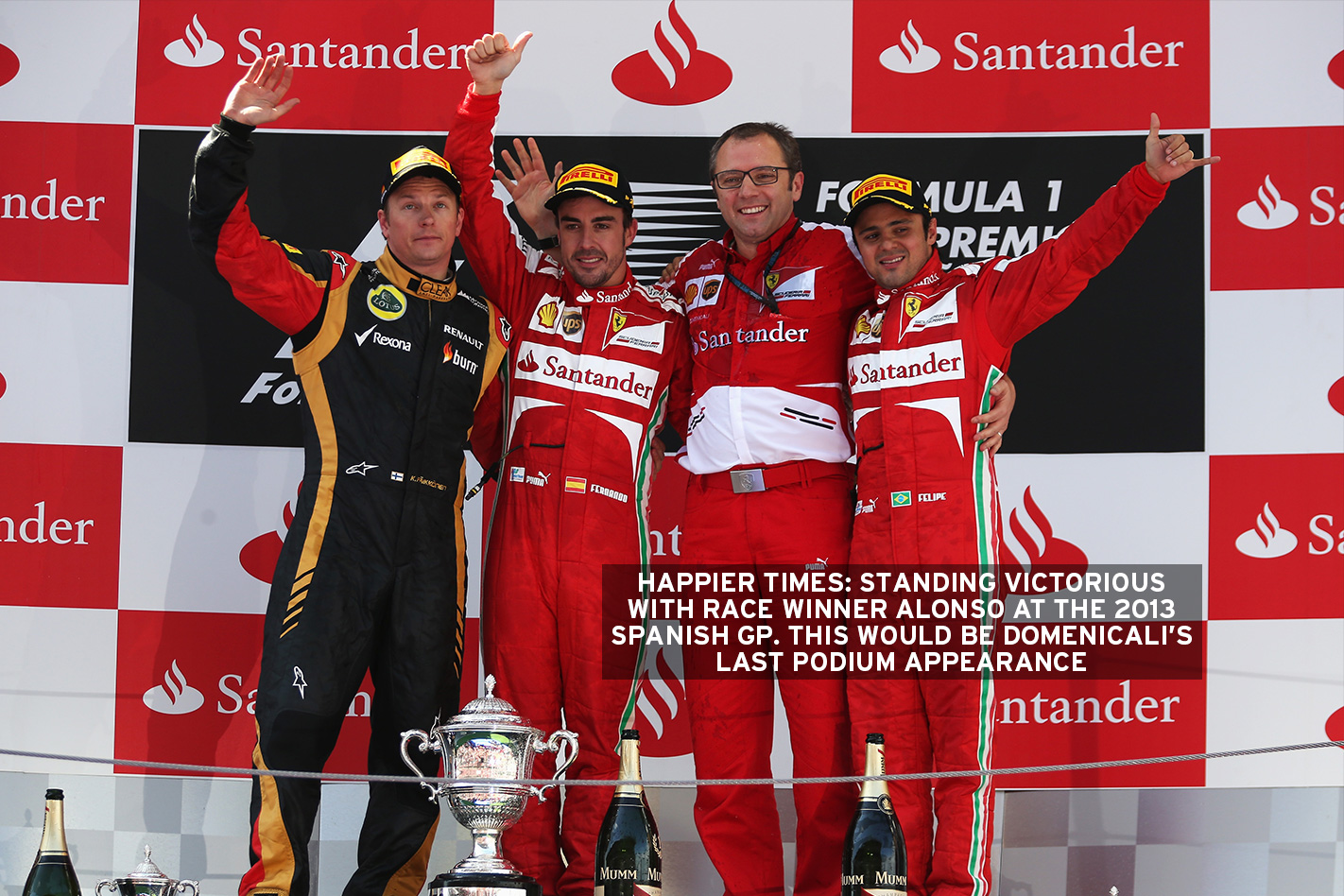
“Actually with this car, it’s super easy. You get out from the circuit at Rivazza. Get straight over there into the hills. Then you go back on the other side to Dozza, a little village, have a coffee. Don’t worry about the clouds. If they are on that side, it will not rain.”


